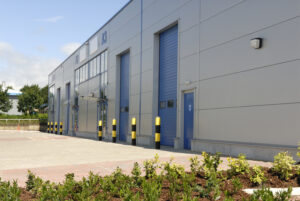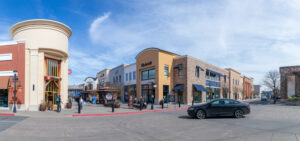Mixed-use developments in California aren’t new. In the last ten years, developers have been renovating various old commercial buildings to create complexes with both commercial and residential units. Such developments are ideal for the Golden State as a chronic shortage of residential units has made it difficult if not impossible for many people to find a place to live. These developments also promote sustainability in a state that has been striving to address the potential impact of climate change. Many mixed-use developers use eco-friendly materials and building practices and design projects to make it easy for residents to get around without a vehicle. Even so, up until a few months ago, there has been one big obstacle in creating or renovating buildings for mixed-use: state zoning laws. This changed, however, with Governor Gavin Newsom’s signing of AB 2011 and SB 6 into law in September 2022. These laws go into effect in July 2023, and they’ll allow developers who meet certain criteria to create residential units in areas zoned for office, retail, or parking.
The bills couldn’t have come into effect at a better time for the Golden State. The California Department of Housing and Community Development’s 2022 statewide housing plan reports that California needs more than 2.5 additional homes. At the same time, there has been a huge rise in office building vacancies since the COVID-19 pandemic. Los Angeles, for instance, has an office vacancy rate of almost 25%. San Francisco has an office vacancy rate of over 20%. What’s more, high interest rates and the current credit crunch are making it hard for commercial space landlords in California to refinance. As a result, many are choosing to default and walk away from their buildings. Brookfield Corp. walked away from the Gas Company Tower and 777 Tower earlier this year. A joint venture between WeWork and Rhone Group defaulted on a 20-story office building in San Francisco’s Financial District a few months later.
Put simply, California’s real estate market is an ideal place for mixed-use development. There are plenty of commercial buildings that developers can convert into mixed-use buildings. What’s more, a lackluster demand for office space will likely lead many commercial real estate landlords to sell their lots at a competitive price. The state government, eager to see these buildings turned into mixed-use developments, has not only changed commercial zoning laws but also offered two pathways for mixed-use developers to start their projects. Urban Footprint predicts that the state’s new laws will allow for the construction of up to 2.4 million residential units. Naturally, this will change the nature of many large cities’ downtown areas. Parts of the city with rows of shops, restaurants, and offices will now feature not only small businesses but also residential units. Empty parking lots will be renovated to provide walking space as well as play areas for the children of residential tenants. What’s more, older, non-sustainable buildings will be renovated to use sustainable materials and building practices, thus creating an eco-friendly downtown environment for everyone to enjoy.
California’s mixed-use development industry is poised to take off this year now that the state’s new zoning laws make it easy to obtain permits to renovate commercial buildings into mixed-use spaces. Crashing commercial real estate prices should make it easy for developers to find viable buildings at a good price. The growing interest in mixed-use housing will likely inspire demand that will encourage a growing number of companies and individuals to invest in mixed-use renovation projects. Needless to say, as mixed-use developments become more commonplace than ever before, it will affect both the real estate market and the landscape of California’s major cities. Growing demand for buildings that can be used for mixed-use developments should boost the commercial real estate market at a time when it’s floundering for lack of demand. The growing popularity and availability of mixed-use housing will change the character of major cities, turning “concrete jungles” into eco-friendly mini-communities that meet the needs of residential tenants and small business owners alike. This will likely spur the nationwide growth of the mixed-use development industry as companies and potential tenants alike see firsthand the many advantages of mixed-use projects.
Have questions?
Peak Commercial is committed to providing you with the latest and most up-to-date information affecting you and your commercial real estate investment portfolio. Contact one of our expert commercial real estate brokers or team members today to learn more.
(818) 836-6717



